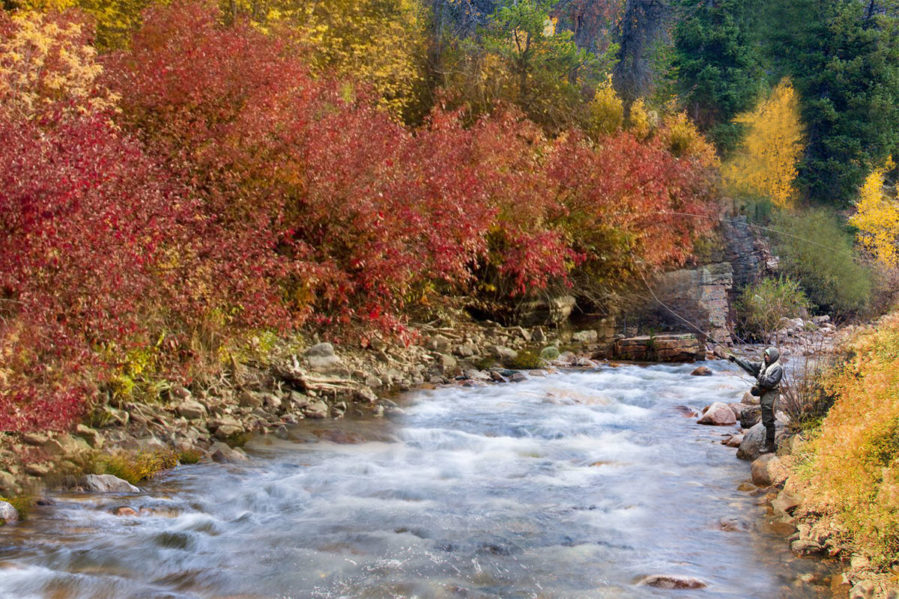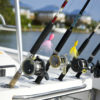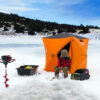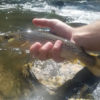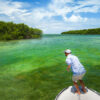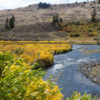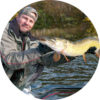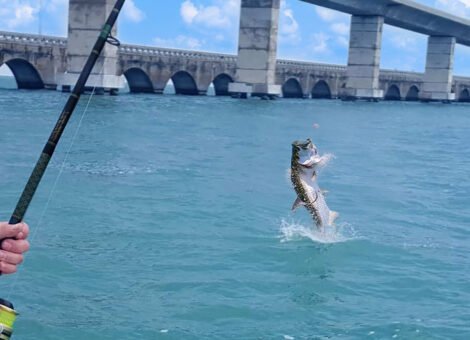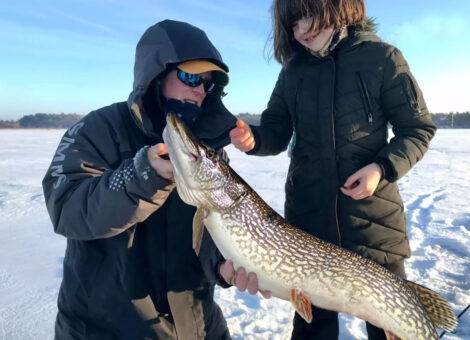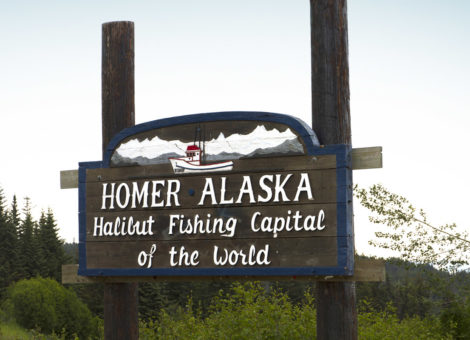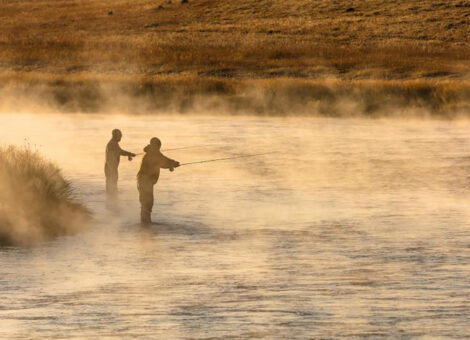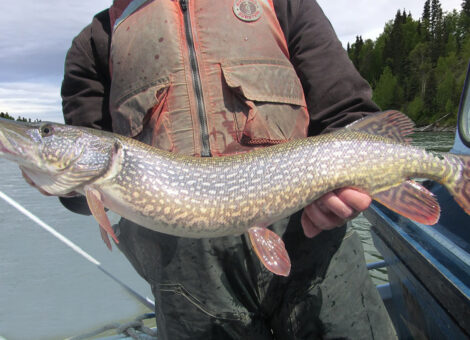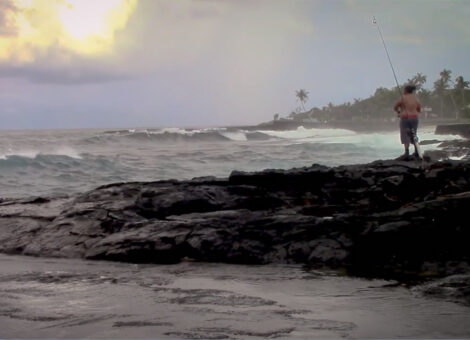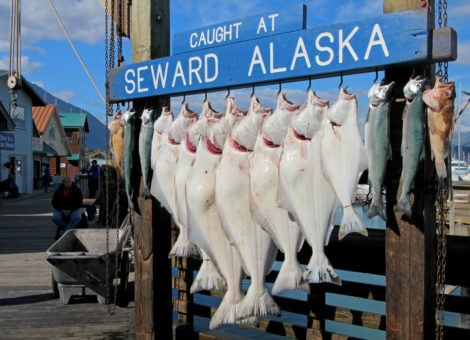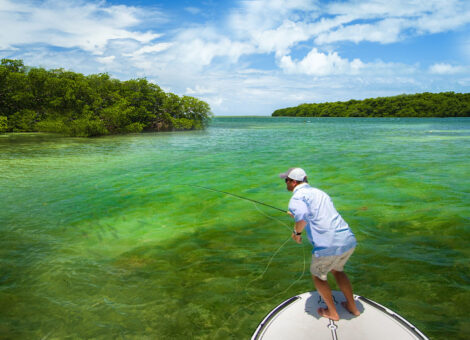The Provo River is a pristine blue ribbon trout fishery located in the Rocky Mountains near Provo, Utah. Anglers come from far and wide to wet there line in its clear, cool waters and try their hand at fly fishing with the hope of hooking a monster Brown or trophy Rainbow.
There are four primary fish species in the Provo River that will take a fly—Rainbow Trout, Cutthroat Trout, Brook Trout, and the trout the river is known for, the mighty Brown. The Provo River has one of the few fully self-sustaining populations of brown trout anywhere in the Rockies. All browns in the Provo naturally reproduce and their is no stocking.
With 3,000 to 4,000 fish per mile, the Provo River supports one of the highest trout concentrations of any cold water fishery in the West. Notwithstanding, its one of the more challenging rivers to fish. The trout are well fed and finicky eaters. They won’t take just any fly. A good presentation is essential, as is a persistent, patient angler.
The Provo River is a great fly fishing river for both beginner and more experienced anglers. It provides easily accessible fish-from-shore access, knee-deep wading, as well as a challenge.
- Where to Fly Fish
- Fly Fishing on the Upper Provo River
- Fly Fishing on the Middle Provo River
- Fly Fishing on the Lower Provo River
- Provo River Hatches
- Best Fly Fishing Flies
- Fly Fishing Tips and Techniques
Where to Fly Fish
Where you decide to fish the Provo River will depend on your target fish species as well as the time of year. There are three distinct fisheries on the Provo River, each home to unique fish species with varying fishing seasons. These fisheries include the Upper Provo, Middle Provo and Lower Provo rivers.
The upper section of the Provo River is a freestone river, with variable seasonal water flow. Here you’ll primarily find cutthroat trout, as well as some brooks in its upper reaches. Downstream from the Upper Provo is the Middle Provo, a trail water fishery that offers some of the best fly fishing for giant browns. Downstream from the Middle Provo is another tail water fishery, the Lower Provo. The Lower Provo offers good fly fishing for both browns and rainbows.
Fly Fishing on the Upper Provo River
The Upper Provo River is a freestone cold water fishery that extends from Jordanelle Reservoir upstream to the base of the Unita Mountains. As a free flowing river, water levels are wholy dependent on winter snow accumulation and spring run off. During wet years, water flows tend to be stronger and fishing a bit better.
The primary fish species in the Upper Provo are Cutthroats and Browns, with an occassional Brook trout. The primary fishing method is fly fishing using dry flies. The trout in the Upper Provo tend to be on the smaller side and will readily take a size #14-#16 lure. The best time to fish the Upper Provo is in the spring pre-runoff, just upstream from the Jordanelle Reservoir. Fish is also good after spring run off in early to late fall.
Trout thrive in cold water. As a rule of thumb the warmer it gets outside, the higher the elevation you want to fish. During the height of summer, when water temperatures are on the rise, the headwaters of the Unita Forest offer the perfect water conditions for some good fly fishing.
| Best time to fish | Best Flies | River Hatches |
|---|---|---|
| During the spring pre-runoff and after the end of the runoff during July through late fall | Elk Hair Caddis, Parachute Adams, Stimulator, Bionic Ants, Chubby Chernogyl, Blue Winged Olive (BWO) patterns | Stoneflies, Mayflies, Caddis, Midges |
Much of the upper Provo River just upstream of Jordanelle Reservoir runs through private property. Be cogniscent of where you’re at and respect property owners’ rights. You can access private property for fishing by obtaining a walk-in-access number from the Utah Division of Wildlife Resources (UDWR). There is abundant public access for fishing the upper Provo River east of Woodland on State Hwy 35 and again along the MirrorLake Highway (UT HWY 150).
The following map shows public access sites and good fly fishing spots along the Upper Provo River.
Fly Fishing on the Middle Provo River
The Middle Provo River is a tailwater fishery of the Jordanelle Reservoir. The section of the Provo river extends from Jordanelle Reservoir 12 miles downstream through the cities of Heber and Midway, Utah to Deer Creek Reservoir. As a tail water fishery, the Middle Prove offers constant water flow and stable temperatures making it a great year-round trout fishery and fly fishing destination.
Target fly fishing species include rainbows and browns. Populations of brown trout in the middle section of the Provo river are self sustaining and reproduce naturally. Seasoned anglers typically fish the Middle Provo in the early spring pre-runoff before water levels get too high. This is when several hatches, including Blue Wing Olive (BWO) mayflies, Pale Mourning Dun (PMD) and Green Drake hatches are at their height. During this time of year, big browns are biting and can be taken with relative ease. It’s not uncommon for brown trout in the Middle Provo to grow over 20 inches.
There is a lot of fishing pressure along the Middle Provo River throughout the spring time. As summer roles in around the beginning of July, and temperatures rise, many anglers begin moving upstream to fish the higher elevations and cooler waters of the Upper Provo.
| Best time to fish | Best Flies | River Hatches |
|---|---|---|
| The best time to fish the Middle Prover River is before the spring run off when water levels are lower and mayfly hatches are most prolific | When fishing the Middle Provo, match the hatch. Popular fly pattersn include Rays Semblance (RS2), Blue Wing Olive (BWO, Pale Mourning Dun (PMD), Green Drake, Green Stimulator, Caddis, Henrysville, and Cidada | Mayflies, Green Drake, Caddis, Stoneflies, Yellow Sallies |
The majority of the Middle Provo River runs through private property. However, through a public access cooridor established by the county, there are 7 public access sites for anglers to access and fish this 12 mile stretch of the Provo River. The following map shows public access sites and good fly fishing spots along the Middle Provo River.
Fly Fishing on the Lower Provo River
The Lower Provo River is another tailwater fishery with strong water flow and fishing throughout the year. The Lower Provo runs from the Deer Creek Reservoir downstream through limestone walled Provo Canyon existing into Utah Valley where it meanders through the city until it reaches Utah Lake. Fly fishing along the Lower Provo is best from Deer Creek Dam to the lower end of the canyon at Olmstead diversion. You can still find fly fishing opportunities downstream from the diversion but access becomes spotting.
This section of the Provo River is long established with healthy populations of trout. If you’re looking to land a trophy Rainbow, this is the place to cast your fly. In addition to Rainbow trout, the Lower Provo also supports a large number of wild brown trout. If you fish long enough you may even snag a cutthroat or two, but this stretch of the Provo river is the domain of rainbows and browns.
The Lower Provo has prolific mayfly hatches with produces trout of exeptional quality. March and April usher in trout fishing with vibrant Blue Winged Olive (BWO) hatches. Fishing picks up again post-runoff in early summer when Pale Morning Dun (PMD) hatches dominate the landscape. The season caps out with Caddis and Yellow Sally Stonefly hatches during the mid-summer months. Match the hatch with your dry fly and you might just hit your bag limit. For wet fly anglers scuds, sow bug, mayfly nymphs, and midge imitations tend to get bites.
| Best time to fish | Best Flies | River Hatches |
|---|---|---|
| Early spring pre-runoff (March and April) and then post-runoff in mid-summer. During the summer months, early morning and dusk produce the best fly fishing | Sprout BWOs, Sow bugs, Mayfly nymphs, Mother Shuker, Streamers, Baetis patterns, Parachute Adams | BWOs, PMDs, Stoneflies, Midges, Mayflies, Caddis |
Access to the Lower Provo is provided by HWY 189. From Olmstead diversion upstream to Deer Creek Reservoir there are several access points provided by parks, trail heads and pull-offs. Again, south of Olmstead diversion the Lower Provo isn’t as accessible for fly fishing.
During the heat of the summer the Lower Provo becomes a tubing mecca with guides and tourists entering the river in droves to drift its waters. This can be frusting for fly anglers, but if you can handle the traffic the fishing is still good.
The following map shows public access sites and good fly fishing spots along the Lower Provo River.
Provo River Hatches
Hatches occur along the Provo River during the early spring pre-run through the later summer as water flow begins to ease. Each section of the provo river has varying hatches which are discussed in some detail in the above sections.
The following hatch chart shows the different hatches that occur along the Provo river and the approximate time of year you can expect each hatch to occur. Hatch dates may be affected by varying water conditions. Use this chart to help you prepare for your next fly fishing trip by selecting fly patterns to match the hatches occuring at that time.
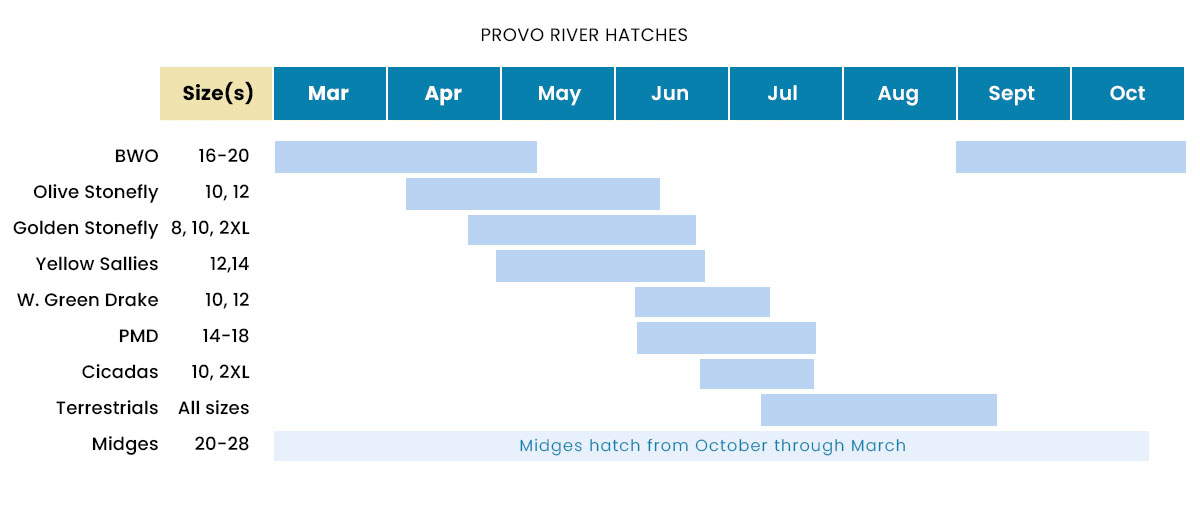
Best Fly Fishing Flies for the Provo River
The best flies to fish the Provo River will depend on the section of the river your fishing and current hatches. You always want hit trout during a hatch while they’re feeding. Matching your fly pattern to the hatch is the best strategy to get feeding trout to bite.
The size of your fly will depend on your target fish species as well as the section of the river you’re fishing. Smaller trout require smaller hooks. When fishing the middle and lower sections of the Provo river for large rainbows and browns, I recommend fly sizes between 10 and 14. When fishing the upper section for smaller cutthroats and brooks, I recommend fly sizes between 12 and 16.
The following is list of fly patterns that have proven effective for catching all types of trout along the Provo River.
- Elk Hair Caddis
- BWO
- PMD
- Parachute Adams
- Mother Shucker
- Green Drake
- RS2
- Cicada
- Mayfly nymphs
- Sow bugs nymphs
- Baetis
- Sparse midge
- Green Stimulator
- WD40’s
- Pheasant Tail Nymphs
- Black Midge Pupa
Provo River Fly Fishing Tips and Techniques
I used to think trout weren’t the most intelligent creatures, but I can tell you from experience millions of years of evolution have honed their senses to react only when circumstances fall within a set variance—and Provo trout are no exception. The Provo River rewards anglers who get to know its ebbs, its flows, and learn its ways.
Dry Flies
When most newbies envision fly fishing the Provo they imagine majestic casts, dry flies landing on the water, followed by giant browns breaking the surface. Don’t get me wrong, dry fly fishing on the Provo is excellent, but I’ve only found it really productive during hatches. The rest of time you’re going to get more bites, and land more lunker browns and rainbows, fishing subsurface.
For dry fly fishing on the Provo, matching the hatch is the name of the game. You’ll almost always have a better catch rate when you fish patterns and presentations that match the local forage and are timed to match the hatch at any given hour. But even the best dry fly presentation won’t get bites if trout aren’t feeding at the surface.
An all too common mistake is to spot riseforms just under the water and assume that trout are taking adult flies from the surface. Often these trout are actively targeting pre-emergent nymphs (emergers) that are just at the surface.
When you see riseforms, but low hatch activity, fishing an emerger (sinker or floater) behind your dry fly (aka “strike indicator”) will allow you to take advantage of trout feeding on both adult and emerger flies. Use your indicator to track your emerger. When the dry fly disappears, give your line a quick jerk to set the hook.
Nymphing
Most anglers are capable of catching trout with a dry fly when they’re aggressively feeding, but it takes a little more finesse and knowhow to catch trout on the Provo month in and month out. But sometimes even the most experienced anglers won’t generate bites with a dry fly when trout aren’t feeding at the surface.
Trout on the Provo River tend to be finicky feeders. During the late spring and early summer when trout are well fed, fishing pressure is high, or there isn’t any hatch activing it can be challening to get trout to bite. When this is the case, try going subsurface with a nymph presentation.
A basic nymph rig is comprised of a strike indicator attached at the base of the leader and one or two nymphs trailing behind under the water. Another common setup on the Provo is a dropper rig, where a dry fly serves as the indicator followed by and dropper fly (wet fly or emerger) trailing in the water near the bottom.
My favorite presentation for fishing the Provo River is a hopper dropper rig where you have a hopper indicator with a sow bug nymph trailing 18 to 20 inches below the hopper. I’ve caught more fish with this setup than any other presentation.
I’ve also had a lot of success nymphing sow bug and San Juan worm patterns on the Provo. Get these worm patterns as close as you can to bottom using a traditional nymph rig or dry fly dropper and you’ll get bites. I don’t know if a San Juan worm is technically a fly, but I’ve had more success fly fishin this pattern than any other pattern with exception of the sow bug.
The key to fishing nymphs effectively on the Provo is to avoid any drag. You want you’re presentation as natural looking as possible. Cast up and across stream leaving ample slak in your line. Then allow your presentation to drift downstream with the current.
Even when fishing a fly subsurface, you still want to match the hatch. The most effective nymph patterns for fishing the Provo are between 18 and 22. Sometimes the best nymphing pattern isn’t a nymph at all, but rather an emerger. Emerger patterns fished right before and during a hatch will often out perform nymphs or dry flies—especially when targeting lunker trout.
Streamers
When all else fails, break out the streamers. Fishing streams subsurface can be productive during low light periods, during early morning and evening, or when it’s overcast. As with nymphs, streamers are most productive where there aren’t any active hatches taking place.
A few favorite streamer patterns for Provo include black and olive colored wooly buggers, zonkers and dark spruce flies. My favorite technique for fishing streamers is to find a deeper hole and strip the streamer through the hole using a pull-pause retrieve. This is also a great technique for targeting larger browns along the Middle Provo.
Streamers tend to out perform dry flie and nymphs during the cooler fall and winter months on the river.


